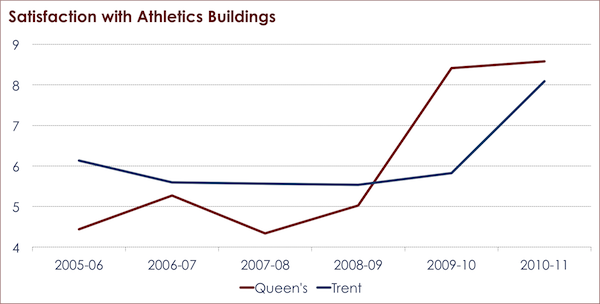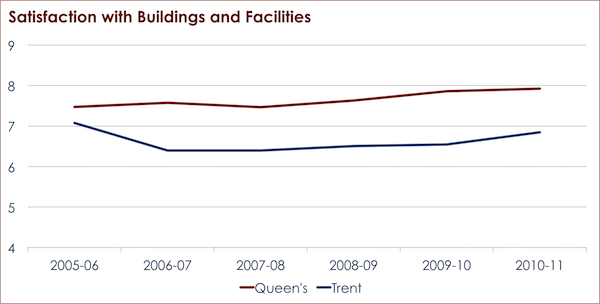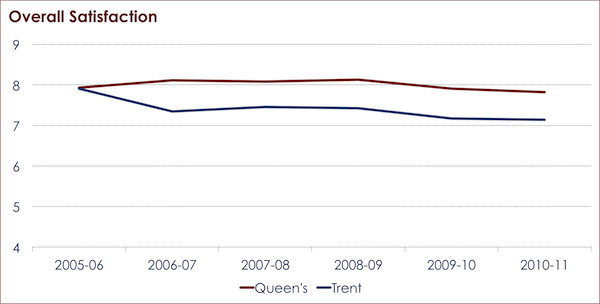With a half dozen universities currently planning upgrades to their athletics facilities, it’s worth asking the question: what’s the impact of these things on student satisfaction?
(Yes…we know…satisfaction isn’t everything. But it’s not nothing, either. And it has the singular value of being measurable, so…onwards!)
We have two recent case studies here. In 2009, Queen’s completed a new $230 million athletics complex, while in 2010, Trent completed an $18 million renovation to its own athletics building. What kind of effects did these renos have on satisfaction?
On our nine-point satisfaction scale, Queen’s saw a 3.4-point jump in satisfaction with Athletics facilities after completion of the new building; Trent saw a 2.3-point bump after its renovations were done. Clearly, it’s not dollars alone that push satisfaction – Trent got 0.126 points of satisfaction per million dollars spent, while Queen’s only got 0.015, which is an order of magnitude of difference.
But that’s just satisfaction with facilities. What about overall satisfaction with recreational and athletic programs themselves? It turns out these see a bump, too, but it’s not as large: the bump is about 1.7 (out of 9) at Queen’s and 1.3 at Trent.
Let’s take this still further. Satisfaction with athletic buildings and facilities is one of a number of buildings and facilities questions we ask. How much satisfaction “flows through” to overall satisfaction with buildings and facilities?
Answer: Not much. While both universities see an increase in overall satisfaction with buildings and facilities, Queens’ increase is small (about 0.22) and not out of line with the increase that Queen’s saw the previous year. Trent does have an anomalous bump of 0.30, which is more than one would expect from statistical noise.
Finally, let’s ask the big question – do these investments have a clear impact on overall satisfaction with the educational experience at these schools?
Answer: No – or, at least, not enough to stand out amidst all of the other factors that affect students’ satisfaction from year to year. Both schools actually saw small decreases in overall satisfaction in the years that the projects are completed.
In sum, it doesn’t seem like you can build your way to student satisfaction: students can’t be bought quite that easily. It would be interesting to have a counter-factual to Queen’s in order to find out what happens if you stick with an old, run-down athletics building and spend $230 million on decreasing class sizes or improving pedagogy instead. Our guess is the effect would be much more dramatic.
Maybe one day we’ll get a chance to try that out.
— Alex Usher and Jason Rogers





 Tweet this post
Tweet this post
